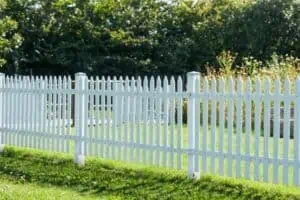Which is Better For Fence Cedar Or Pine?
When you’re looking for a new fence, you have to decide which is better for fence cedar or pine. The decision depends on a number of factors, including price, durability, appearance, and maintenance needs.
(Searching in Google “vinyl privacy fence cost“? Contact us today!)

Cost: A key factor is an initial investment you make when installing your fence. Cedar fences are usually more expensive than pine, but they can last a much longer time.
A cedar fence will also require less maintenance than a pine fence. This is because cedar does not need to be treated with chemicals to be durable, making it a more eco-friendly option.
Western Red Cedar:
One of the most popular woods for fences is Western Red Cedar, which comes in a variety of colors and finishes. It’s also very resistant to decay and rot, thanks to the chemical components found in its heartwood.
It’s also very lubricious and water-repellent. This makes it ideal for a wood fence that has to move frequently, such as between the garden and the house or around a pool.
Besides its beautiful appearance, Western Red Cedar is extremely durable and will last 30 years or more with regular maintenance. It will resist insects and mold more effectively than pine, as well as be more resistant to rot and other environmental factors.
Cedar also has a naturally attractive and pleasing odor, which can be a draw for some homeowners. This is because a compound called thujaplicins is present in the heartwood of cedar.
This is a natural deterrent to destructive insects, including termites and carpenter bees. However, you may need to regularly apply insecticides to keep these pests from infesting your fence.
Pine:
Pressure-treated pine is a common choice for fences, but it’s not as durable as cedar. It can withstand the elements, but it’s at risk of warping and shrinking. It’s also more susceptible to rot in the soil.
In addition, pine needs a lot of care and maintenance to prevent it from rotting over time. This includes checking for signs of rotting and replacing boards that are loose or sagging. It also needs to be re-stained or painted periodically.
The overall lifespan of a pine fence is about half as long as a cedar fence, but you can extend this length by maintaining it properly and checking for signs of damage or rot.
Another advantage of a cedar fence is that it can provide you with a great deal of privacy, especially if you live in a tight neighborhood. This is because cedar is so dense that it can block out up to 70% of sound.
If you’re looking for a more affordable fence option, you should consider Japanese cedar. It’s not as durable or as attractive as Western Red Cedar, but it can still be a good choice for those on a budget.
Lastly, you should also think about the climate in your area. If it’s a very humid region, it might not be the best idea to install a cedar fence because the wood will expand over time. On the other hand, if it’s a dry climate and there aren’t many rainy days, cedar should be more durable and resilient.

